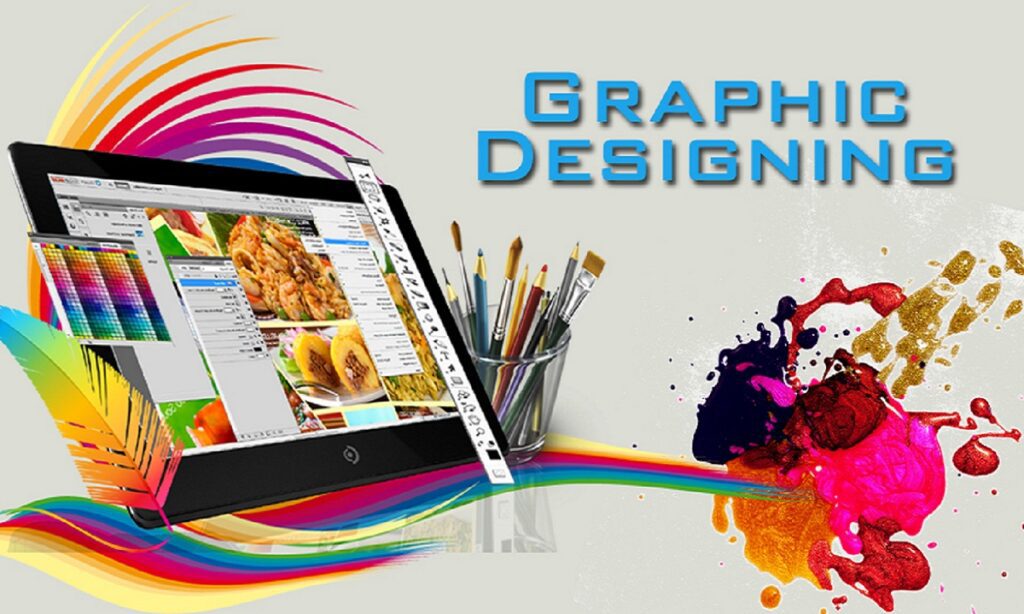Depending on the company, graphic designers might be tasked with developing and producing graphic design for a variety of mediums, from digital mobile apps to websites to printed materials. It’s a complicated (and fun) job, and competition for roles can be fierce. Will earning a graphic design certification give you an advantage in the job hunt?
In order to fully determine the answer to that question, it’s worth looking at what companies’ demand of their in-house graphic designers. For example, a small gaming startup might hire a graphic designer to help design mobile ads, which would require design, typography, layout, scheduling and deadline monitoring, some programming, and an awareness of best practices for ads. A huge tech giant, on the other hand, might hire a graphic designer to focus solely on internal materials, including presentations to senior management—which might require everything from data visualization to research.
Many graphic designers also end up at agencies,
Where they might produce projects for multiple clients. That’s similar in some ways to freelance designers, who also maintain project portfolios—but must often source their clients themselves.
“One work environment isn’t better than the other—agencies, in-house departments and freelancing have their advantages and disadvantages, and it depends on the designer where they want to take their career,” Diane Do Meyer, executive director of The Creative Group, told Dice last year. “It’s less of a career path and more of a career journey, with twists and turns along the way that are specific to the individual and their interests and passions.”
It’s also a career path that hinges on the designer’s portfolio—which is a key reason why experts advise that anyone breaking into graphic design put a heavy emphasis on independent projects that will show off a range of skills. But do employers care about graphic design certifications?
How many graphic designer certifications are there?
Here’s the good news: According to Burning Glass, which collects and analyzes data from millions of job postings across the country, there are relatively few graphic design certifications. That’s a nice contrast from technologist and management positions with massive, complicated certification ecosystems.
This is the Burning Glass list of the most prominent ones, based on job posting data (i.e., employers requesting specific certifications):
- Certified in Adobe Photoshop
- Adobe Certified Expert (ACE)
- Adobe Illustrator Certification
- Graphic Design Certification
- Certified Graphic Designer
- Adobe Certified Associate (ACA)
- Adobe Captivate Certification
- Autodesk 3ds Max Certified
- Omg Certified Uml Professional
- Adobe Certified Instructor (ACI)
- Advertising Design Certification
- Adobe InDesign (Certified)
Fortunately, Adobe has a page that breaks down its certifications (including ones other than those listed above) along with documentation about how to earn them.
What certifications do you need for graphic design?
This is where things get interesting. According to Burning Glass, only a small subset of jobs actually demand graphic design certifications:
While a certification might give you an advantage in the job hunt, in other words, even the vast majority of graphic designer roles don’t demand one. That’s good news if you’re hoping to land a job on the strength of your skills, experience, and previous work.
Which certifications are in demand?
While it seems there’s a limited market among employers for graphic design certifications (although as you can see from the above chart, demand for some of those certifications is expected to grow), Burning Glass makes it clear that some certifications are more in demand than others; specifically, anything that certifies your skills in Adobe Photoshop:
What is/are the benefits of graphic design certification(s)?
If you’re locked in tough competition for a prized graphic designer job, having certifications could give you a slight edge with a hiring manager or interviewer, especially if they’re the type who prizes certifications; for example, an HR manager who’s used to interviewing technologists (and thus comfortable when they see an application with a lot of certifications in it) may gravitate toward a graphic designer with a lot of certified knowledge of design platforms.
As with so many professions, though, landing a graphic design job hinges heavily on your skillset, which means having an extensive portfolio. Companies want to know that you’ve tackled (and excelled at) similar work in the past. If you’re applying to design graphics and layout for an e-commerce site, for instance, they’ll be most interested in whether your portfolio features similar sites and projects (especially if you’ve demonstrated a solid grasp of UI/UX).
Soft skills such as communication are also key. Graphic designers not only need to listen in order to figure out the organization’s requirements for a particular project, but they must also communicate frequently with stakeholders to make sure everyone’s onboard with the direction of their creations.
Do Companies Value a Graphic Design Certificate when Hiring?
Although as we’ve seen graphic design is a fruitful career, even if you’re not planning on becoming a designer then the skills, concepts and mindset that you will develop whilst earning a blueskygraphics certificate will benefit and be useful in any career. Some skills, such as being able to work to tight deadlines, are transferable to practically any line of work.
Moreover, the creative skills you learn will make you a better-rounded person and could even make you stand out to a potential employer.

